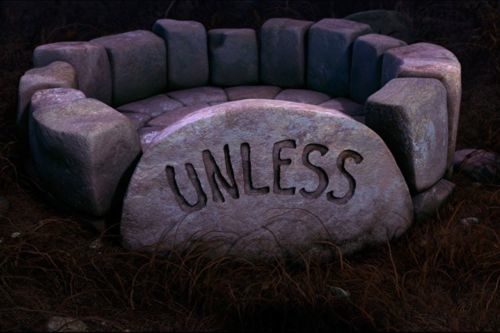As you continue your LSAT prep, you’ll encounter many sample LSAT questions that include Sufficient & Necessary statements. To start off this week, I thought we could go over another type of Sufficient & Necessary statement: the “unless” statement. The strategy for an “unless” statement is simple. The part of the sentence that follows the “unless” is the necessary condition. The other part of the sentence constitutes the sufficient condition, but you must make sure to negate it!
For example: A unless B.
Necessary condition: B
Sufficient condition: not A
Rewrite: If not A, then B.
not A ==> B
not B ==> A
Simple, right? Now let’s look at a more complicated example.
“Unless you love someone, nothing will make sense.” –E.E. Cummings
Necessary condition: you love someone
Sufficient condition: something makes sense
Rewrite: If something makes sense, then you love someone.
SMS ==> LS
not LS ==> not SMS
Let’s try one more!
“Man cannot discover new oceans unless he has the courage to lose sight of the shore.” –Andre Gide
Necessary condition: he has the courage to lose sight of the shore
Sufficient condition: Man can discover new oceans
Rewrite: If man can discover new oceans, then he has the courage to lose sight of the shore.
MDNO ==> CLSS
not CLSS ==> not MDNO
Don’t let the “unless” rule get under your skin. Just make sure to negate the portion of the sentence that does not follow the “unless”—that’s the step that most students forget! Now go practice this technique on a few Logical Reasoning sections!
Happy Studying!










